Video of the Week:
When is Cantaloupe Ripe on the Vine?
Fruit:
When are Apples Ready to Pick?
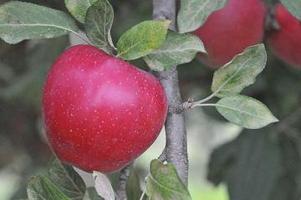
Color change: As apples mature, the skin color in areas of the stem and the calyx basin at the bottom of the apple turns from an immature green to a light-yellow color. Some apples will develop a red skin color before they are ripe, so this is not a reliable indication of maturity.
Flavor: This is a good guide if you are familiar with the apples you have and know how they should taste. Even if you do not know the characteristic flavor of the kind of apple you have, you can still sample slices of a few apples and decide if they have a sweet flavor. If they are not ready to harvest, they will taste starchy or immature. If apples have already fallen and taste a bit starchy, store them for a period to see if they become sweeter.
Flesh color: As apples mature and starches change to sugars, the flesh changes from very light green to white. When you cut a thin slice and hold it up to the light you can see the difference.
Days from bloom: The number of days from bloom is a reliable guide for general maturity time, but weather conditions will have some influence. Some kinds of apples and approximate days from bloom to maturity are Jonathan, 135, Delicious, 145, Golden Delicious, 145, and Winesap, 155 days. This process may be slower than usual due to the cooler weather this year.
Seed color: The seeds of most apples change from light green to brown as the fruit ripens. This indicator should be combined with other changes since it is not absolute. The flavor of the apples, the change in color of the stem and calyx basins and flesh color are important in deciding if apples are ready to harvest. (Ward Upham)
Vegetables:
Still Time for a Salad Garden
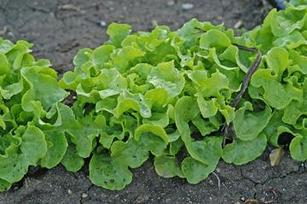
Ornamentals:
Lilacs with Dead Canes
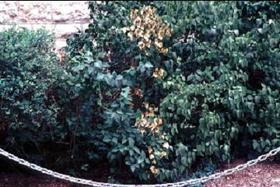
Though it is too late to spray for lilac borer this year, removal and destruction of dead canes will help reduce populations next year. You may also want to spray for the insect next spring. The first spray for ash/lilac borer should be applied when the Vanhoutte spirea is in full to late bloom, probably by about May 1. A second spray should be applied four weeks after the first. Thoroughly treat the lower portion of the stem of lilac or privet. Permethrin (Hi-Yield 38 Plus and Hi-Yield Garden, Pet, and Livestock Insect Control) are labeled for control. Though there are a number of other homeowner products that contain permethrin, the products listed above are the only ones I've found that specify how the material should be applied for borer control on the label. (Ward Upham)
Pests:
Plants and Lacebug Damage
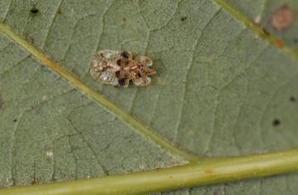
Healthy trees will not be damaged by lacebug this late in the season. The trees had plenty of time during the spring and summer to make the food needed to survive the winter. Control measures are not recommended. (Ward Upham)
Elm Leaf Beetle
Elm leaf beetles are serious nuisance pests of elms. Both adults and larvae feed on the elm leaves. Adult beetles are green-and-yellow striped and about 1/3-inch long. Young larvae are black and hairy but become yellow with two longitudinal dark stripes as they mature. The larvae cause most of the injury by window-feeding on foliage, resulting in a skeletonized appearance. Heavily infested leaves turn brown as if scorched by fire and often will drop prematurely. After several weeks of feeding, the larva crawl down the trunk or fall to the ground where they pupate. Elm leaf beetles overwinter as adults.
Active larvae can be controlled with a number of insecticides. However, check to make sure that larvae are still active before spraying. In many cases, the larvae have dropped from the trees and are pupating. Spraying is ineffective and unnecessary once pupation starts. Effective sprays for larvae (and adults) include carbaryl (Sevin), acephate (Acephate, Orthene), spinosad (Conserve; Captain Jack’s Dead Bug Brew, Borer; Bagworm, Leafminer & Tent Caterpillar Spray) lambda-cyhalothrin (Scimitar, Spectracide Triazicide, Bonide Beetle Killer). (Ward Upham)
Contributors: Ward Upham, Extension Associate
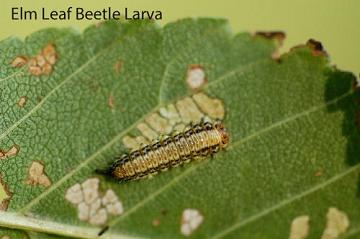
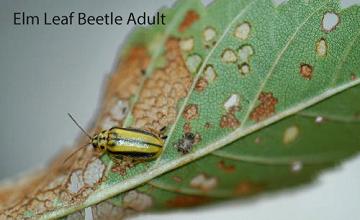
 RSS Feed
RSS Feed
